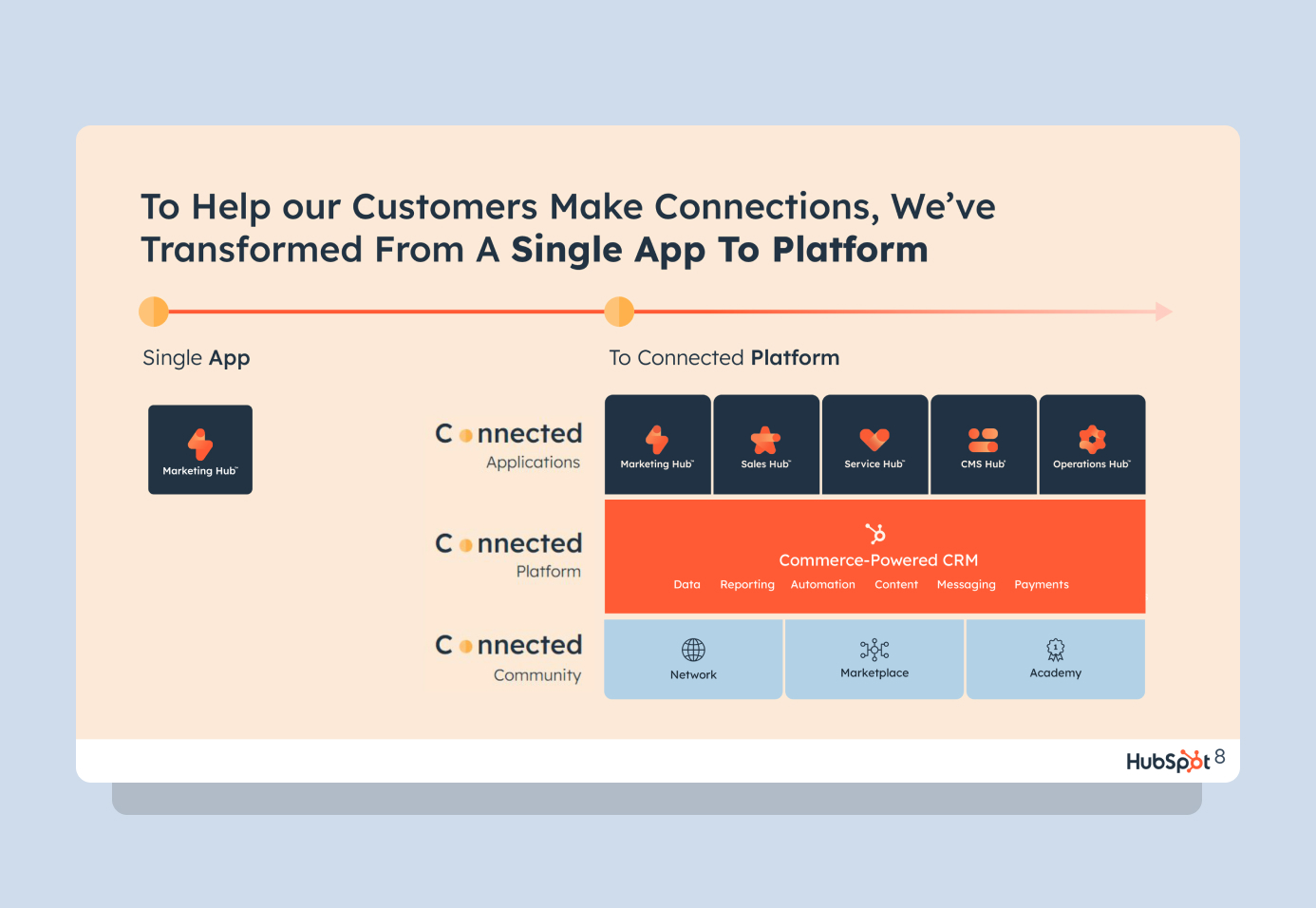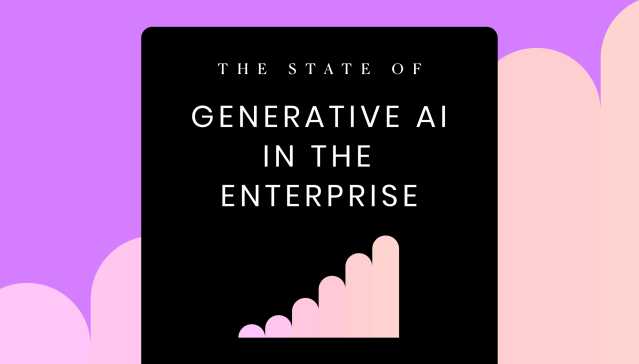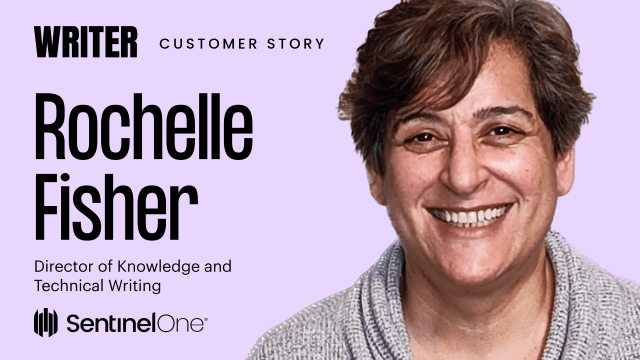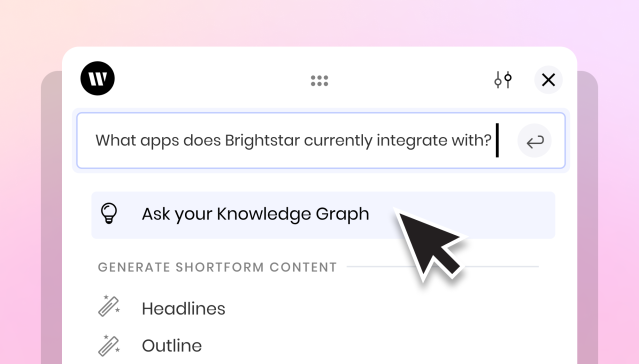- story – 5 min read
- AUDIO – 10 min
Faster, better, together
The story of the HubSpot content team with Writer

Listen to the HubSpot story or read the (edited) transcript below
WRITER is the full-stack generative AI platform for enterprises. We make it easy for organizations to adopt AI apps and workflows that deliver quantifiable ROI quickly.
WRITER helps organizations build highly-customized AI apps that compress entire business processes, support complex use cases, and infuse work with company intelligence. Our enterprise-grade platform can be deployed flexibly, keeps your data private, and adheres to global privacy laws and security standards. Leading enterprises choose WRITER, including Vanguard, Intuit, Accenture, and Kenvue.
Jonathon Colman is a senior design manager at HubSpot, where he co-leads the Content Design practice with Samieh Shalash. Together, they lead, develop, and grow a global team of content designers building HubSpot’s products, such as Sales Hub, Service Hub, CRM, and more. Read or listen to the story of how Jonathon connects writing quality and consistency at HubSpot, empowering the company’s 30+ person content team to serve a company of 7,000+ employees.
Tell us about you — your background and philosophy when it comes to content design?
I’ve been working in content since 1997. I started out in tech writing, as many content designers do. I took a brief detour and served in the US Peace Corps for a couple of years in West Africa. But when I came back to the States, I focused on online marketing for nonprofits, working at places like The Nature Conservancy, Conservation International, and elsewhere for the better part of a decade, building up their online and social media marketing programs. Later on, I moved to REI, and there I did a deep dive into SEO and kicked off their content marketing program. It was at that point that I became interested in user experience work. My manager, Samantha Starmer, who was one of the very earliest practitioners in the field of information architecture (IA), convinced me to go to graduate school at the University of Washington, where I learned about information architecture. Then, she gave me an opportunity to apply that to my work. After that, I moved on to Facebook as a content strategist, or what we now call a content designer. And I’ve been building, leading, and managing content designers at various places since, including Intercom and, now, HubSpot.
My philosophy when it comes to content design is to always focus on being clear before being clever or cute. So that means, among other things, that we try to reserve moments of delight for when the stakes are low. But our ultimate focus is on making the customer, or the other kinds of users we have, successful in completing their tasks. If they’re successful, if they’re growing in their careers and their other pursuits, that helps us be more successful, too.

Tell us about content design at HubSpot, and its strategic value to your brand?
We think content and UX are strategic differentiators for HubSpot. That’s why our leaders mention them in public spaces, like our earnings calls and other statements. We think this really sets us apart from our competitors, and content design, obviously, plays a massive role in making that happen.
Content design at HubSpot is decentralized. What that means is each content designer has a really high degree of autonomy in their work. And that’s why we work with them to produce what we call an operating system. This is a document that shows all of their peers and colleagues and stakeholders what they do, how they do it, what their priorities are, and how to work with them and include them early on in the product and design process.
We have so many exciting things going on in content design at HubSpot. We’re defining our terminology standards and style guide more. We’re improving our partnership with localization to make sure that the content we write is useful, usable, and accessible all over the world. We’re engaging in information architecture efforts. We’re creating new standards and documentation. And most of all, we’re focusing on scaling our presence with content operations work that helps us focus on more strategic efforts. It also helps our partners self-serve so that they can get their work done faster. All of that creates a more consistent and connected experience for our customers — that’s what we really care about.
What led you to pursue WRITER? What challenges were you trying to solve?
We wanted to enable all of our designers — both product and content designers — to hit a really high level of quality in their UX writing and make it more consistent across our entire product, no matter which teams or groups of teams they were involved in. Writer helps us speed up that process of doing UX writing, but it also makes it easy for any designer to hit that really high quality and consistency bar.
“WRITER helps us speed up that process of doing UX writing, but it also makes it easy for any designer to hit that really high quality and consistency bar.”

Jonathon Colman
Sr. Design Manager and Content Design practice co-lead
Some of the key things that we looked for in terms of requirements [for an AI writing tool] were that we wanted a centralized and structured database of terminology that was important to us, so that we could work with our localization team, because defining terms in a more standardized way helps enable the best and highest quality translation. We also wanted to work with an AI company that wouldn’t store our content or use it for training their models.
Since we’ve implemented WRITER, we found that we have conflicts across the board on many of our terms. It’s helped us discover new areas of conflict. And it’s also helped us resolve existing legacy conflicts. Examples of that would be different names for the same product or, more often, different names for the same concept.
Something we’ve discovered recently is that we use the term “native” in the product. It’s often to refer to a first-party solution — something HubSpot has built, an app integration or product or feature. And so, with WRITER, we defined this as a “don’t use” term so that it discourages people from using it in the product. Instead, we suggest the alternative, “HubSpot-built.” That’s how we now refer to products, features, apps, integrations — things that HubSpot actually created ourselves. So, it represents all of our first-party utilities and it helps us not exclude native populations.
![With Operations Hub, we’ve introduced native [hover: HubSpot-built] integrations with several other leading...](https://writer.com/wp-content/uploads/2023/04/Style.jpg)
What was life like before WRITER?
The time before we started using Writer was like the dark ages. We had just a heap of disconnected spreadsheets and documents where we had defined terms and styles. Sometimes our partners used them. Sometimes they didn’t. We had no way of telling, but now Writer has solved those problems for us.
[Now] everything is centralized in one place. We can understand when people accept suggestions from Writer and when they don’t accept them, and then we can follow up to understand why. Sometimes standards need to be updated or they’re not the right fit for the context. That’s okay. But now we have a way of having that conversation and gaining some intelligence as to what people are doing, and why. Writer has taken what was this really chaotic landscape of just disconnected, disorganized things and made it all systematic. So everyone can move a lot faster, a lot better together.
“The time before we started using WRITER was like the dark ages. We had just a heap of disconnected spreadsheets and documents where we had defined terms and styles.”

Jonathon Colman
Sr. Design Manager and Content Design practice co-lead
What are some of the outcomes you’re getting
with WRITER?
We look at a number of metrics as we think about the value in the ROI of Writer. There are hard things and soft things. The key things we’re looking at here are writing quality and the time saved by people doing the writing. This includes everyone from content designers who know our standards by heart along with product designers who don’t, and therefore tend to struggle more. One of the soft things therefore we look at is, hey, what do we do with that time saved? And our theory is that if content designers and product designers save this boatload of time, then they can then turn that time towards more strategic work. Maybe it’s customer journey mapping. Maybe it’s accessibility. Maybe it’s getting a new feature to market faster and better. That’s a much better use of their time than going into a wiki or a static document somewhere and rifling through a bunch of standards.
We’re talking with our team to better understand the ROI of using Writer. And one of the key things we’re learning right now is that Writer improves people’s confidence. So, as our product designers historically have struggled with these UX writing efforts, especially when they don’t have a content designer to work with, Writer helps them not just work faster but more confidently. They feel that they’re making better decisions. They have more confidence in approaching harder UX writing problems.
“WRITER helps our team not just work faster but more confidently. They feel that they’re making better decisions.”

Jonathon Colman
Sr. Design Manager and Content Design practice co-lead
What’s next for your team?
We think the future is bright and Writer is helping us take more advantage of things that we’ve always wanted to do, but we struggle to do at scale. So right now, our content design team is focused on building out our content operations efforts to better scale our presence, help our partners be more confident in the work they do, and work more strategically when it comes to solving content design problems on their own. We’re also moving faster and creating a higher quality, more consistent, more connected product experience. So, as these operations and scaling efforts take off, we look forward to growing our content design team, further setting up our partners for more success, and ultimately creating more value for HubSpot customers.


